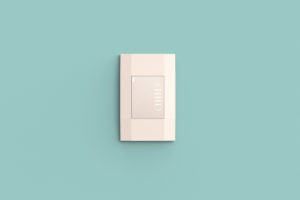
Electrodes play an important role in capacitive switches. Without at least one electrode, capacitive switches won’t work.
Some switches use a mechanical method of operation, whereas others use a touch-based method of operation. Capacitive switches fall under the latter. They are touch switches that open and close a circuit in response to physical touch. You can’t just touch a capacitive switch with any object, though; capacitive switches only respond to conductive objects — similar to how capacitive touchscreens only respond to conductive objects. The human body is conductive, meaning you can use a bare finger to control a capacitive switch.
What Is an Electrode?
An electrode is a solid conductor that’s used in circuits to make contact with a nonmetallic part. They are used in a variety of electrical devices and systems, one of which is capacitive switches. A typical capacitive switch has a single electrode that’s located behind a panel made of a nonmetallic material, such as glass or plastic.
Why Capacitive Switches Use Electrodes
Capacitive switches use electrodes to measure changes in capacitance. When turned on, they will generate an electrical charge that travels through the electrode. Capacitive switches will constantly measure this electrical charge while looking for changes in capacitance
Capacitive switches receive their namesake from the way in which they detect touches. Like capacitive touchscreens, capacitive switches measure changes in capacitance. A change of capacitance will occur in response to physical touch with a conductive object. When you touch a capacitive switch with a conductive object — the human body is conductive, so you can use a bare finger — the switch’s capacitance will change. The conductive object will increase the switch’s capacitance, at which point the switch will open or close its circuit.
Why Choose a Capacitive Switch
You don’t have to worry about capacitive switches failing prematurely. Unlike mechanical switches, they don’t contain any moving parts. Capacitive switches use a gentler touch-based method of operation, which typically results in a longer lifespan.
Capacitive switches are easy to clean. The top layer is sealed and separated from the underlying circuit. Therefore, you can easily clean them.
Capacitive switches are easier to use than mechanical switches. Mechanical switches require pressure. You’ll have to not only touch a mechanical switch to activate it; you’ll have to press down with enough force to move the internal parts. Capacitive switches require little or no pressure. As long as you touch a capacitive switch with a conductive object, it should open or close the circuit.
